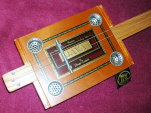A Question About Framng Materials
15 posts
• Page 1 of 1
A Question About Framng Materials
I've been looking around the forum, checking out designs and construction techniques, and just generally absorbing everything I can like a sponge. I have a question for the home designers/builders about the materials you used when you framed your floor and walls.
I see a lot of pine/fir/hemlock/whitewood construction, and for good reason - it's inexpensive and readily available. I'm considering using redwood for my framing because of it's rot resistant properties. I've scrapped a few travel trailers in the past and the common problem with them all has been rot in the framing - and a couple of them were less than 20 years old. All of them used standard pine/fir/hemlock/whitewood framing, and it just rotted like mad.
I've worked with redwood several times before in building decks, fences, gates, outdoor furniture, and garden arbors, but I've never framed a wall with it. I've always thought that was just due to cost, but something in the back of my mind tells me to ask the question: is there any other reason why redwood (or even cedar for that matter) isn't used? Is it a strength issue? Something else?
Maybe a professional carpenter or experienced trailer builder has an answer as to whether or not redwood has any quirks or idiosyncrasies I need to be aware of.
So, other than cost, is there any other reason why you wouldn't consider using redwood to frame your next trailer build?
I see a lot of pine/fir/hemlock/whitewood construction, and for good reason - it's inexpensive and readily available. I'm considering using redwood for my framing because of it's rot resistant properties. I've scrapped a few travel trailers in the past and the common problem with them all has been rot in the framing - and a couple of them were less than 20 years old. All of them used standard pine/fir/hemlock/whitewood framing, and it just rotted like mad.
I've worked with redwood several times before in building decks, fences, gates, outdoor furniture, and garden arbors, but I've never framed a wall with it. I've always thought that was just due to cost, but something in the back of my mind tells me to ask the question: is there any other reason why redwood (or even cedar for that matter) isn't used? Is it a strength issue? Something else?
Maybe a professional carpenter or experienced trailer builder has an answer as to whether or not redwood has any quirks or idiosyncrasies I need to be aware of.
So, other than cost, is there any other reason why you wouldn't consider using redwood to frame your next trailer build?
TV: 2004 Jeep Liberty Sport
Currently stuck in a tent.
Currently stuck in a tent.
-

Dusty82 - The 300 Club
- Posts: 313
- Joined: Thu Jan 28, 2010 8:15 pm
- Location: Southern Oregon
Redwood would be fine. Compared to fir it's a bit softer and has lower load bearing capacity, neither of which matter for teardrop building. That said, if you keep the water out you don't have to worry about rot. I would focus my energy on making it waterproof.
Nothing wrong with belt and suspenders, though
Nothing wrong with belt and suspenders, though

In anything at all, perfection is finally attained not when there is no longer anything to add, but when there is no longer anything to take away.
-- Antoine de Saint-Exupery
-- Antoine de Saint-Exupery
-

wannabefree - The 300 Club
- Posts: 380
- Images: 82
- Joined: Fri Jul 11, 2008 11:00 pm
- Location: Phoenix


 As a cabinet maker,I question the use of redwood for framing. I have found dry redwood not to take glue up and screws very kindly (to soft). Would recommend poplar as the best both for low cost and strength. Use white oak in the areas that require high strength (hinge areas). You could use a good wood sealer before closing in the walls for added protection. Good luck.
As a cabinet maker,I question the use of redwood for framing. I have found dry redwood not to take glue up and screws very kindly (to soft). Would recommend poplar as the best both for low cost and strength. Use white oak in the areas that require high strength (hinge areas). You could use a good wood sealer before closing in the walls for added protection. Good luck.


